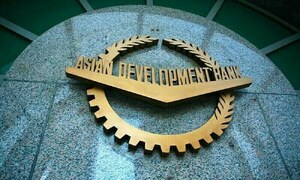China and the United States have signed a preliminary agreement to cooperate on strategic petroleum reserves (SPR), China's National Energy Administration (NEA) said, marking the first such effort between the world's top two oil consumers. Under the agreement, the US Energy Department and NEA will share information on technical, management and policy issues related to oil stockpiles, the Energy Department said in a statement on Friday.
The pact was forged during a visit to Beijing this week by US Energy Secretary Ernest Moniz with NEA head Wu Xinxiong, the NEA said on its website late on Thursday. The agencies will hold annual technical meetings held alternately in each of the two countries. "These activities will allow the two countries to understand each other's systems and decision-making, which will facilitate effective response to disruptions in the global petroleum supply," the Energy Department said. Ensuring a sufficient emergency oil stockpile means more to China after it surpassed the United States late last year as the world's largest net oil importer. Overseas purchases help meet around 57 percent of China's total crude oil requirement.
The International Energy Agency (IEA), the energy watchdog for developed nations, has long pushed for China to be more transparent in sharing its stockpile data, even though China is not an IEA member. China aims to eventually meet the OECD standard of stockpiling enough to cover 90 days of net oil imports. By the end of 2013, China had a total of 141 million barrels reserve space, a research arm of the country's top oil and gas producer CNPC estimated in January, which would be equivalent to about 22 days of the country's net oil imports.
China filled its first batch of SPR tanks totalling 102 million barrels by early 2009 and began building phase-two tanks later in the same year. China finished construction of two reserve bases for the second phase - Lanzhou and Dushanzi in landlocked north-west - in late 2011 and pumped oil into them in the first half of 2012, industry sources have said. Beijing has not disclosed second-phase details such as location, individual capacity, investment or construction schedule. Both the government and oil firms have guarded the details on stock levels amid worries that giving away data would put China at a disadvantage in the market.
In the first half of 2014, Chinese crude imports rose 10.2 percent versus a year earlier, more than double the rate in 2013 despite subdued demand growth for oil. Analysts have said such high imports could suggest stockpiling in commercial storages or even SPR tanks. Barclays predicted in May that China could add up to a total of 58 million barrels this year of new SPR capacity.
BR100
15,085
Increased By
112.5 (0.75%)
BR30
44,012
Increased By
987.7 (2.3%)
KSE100
148,618
Increased By
1274.3 (0.86%)
KSE30
45,248
Increased By
370.7 (0.83%)





















Comments
Comments are closed.